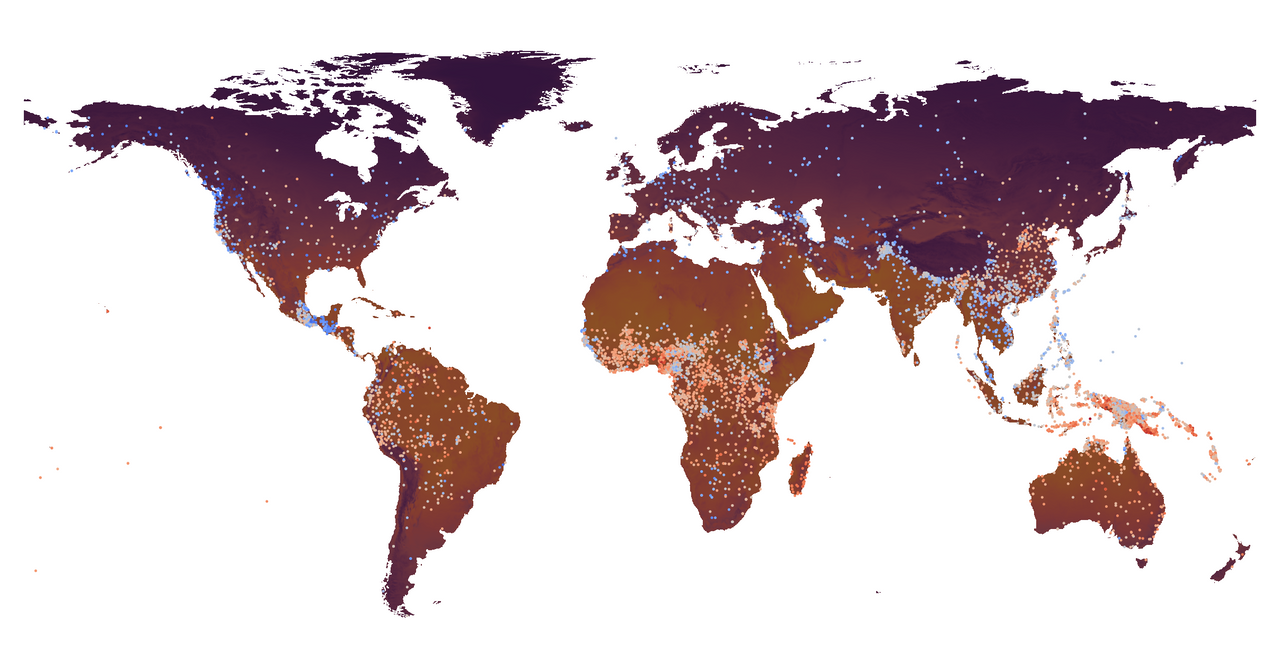People May Speak More Loudly or Quietly Depending on the Climate
Places that are usually hot or cold developed languages differently.
Every distinguishing feature of a language—its sounds, cadences, and grammatical patterns—was shaped over time as each language developed. Volume is no exception.
In new research, scientists analyzed around 346,000 words from about 5,000 languages and dialects and calculated each language’s average “sonority.” Sonority is a measure that can partially be understood as loudness, though it also includes how resonant a word is. For example, a word with lots of vowels like “mouth” has a bigger and rounder sound that uses more space in the mouth and is therefore more sonorous than a word like “lips,” which has higher frequencies and is much more closed.
They then looked at global temperature records from NASA to assess whether there was a relationship between these two variables. They found that language families that developed in warmer climates tend to have greater sonority, or tend to be louder, than those that developed in colder areas. To be clear, it’s not that the people speaking these languages tend to speak louder, it’s that the quality of the words in these languages are more resonant, or easier to say loudly. The findings were published in the journal PNAS Nexus.

There are a couple theories why this may be, though among experts, “there’s almost no consensus,” says Tianheng Wang, a PhD student of computational linguistics at Nankai University and the first author of the new paper. The first theory is that in cold climates, since cold air is drier than warm air on average (which is just simple physics) and that dryness can make it difficult to vibrate vocal cords, language became quieter because that was just more comfortable. Plus, in the cold, you may want to keep your mouth closed more often.
The second theory, Wang says, posits that since air in warmer climates tends to absorb and dampen higher frequency sounds, languages there developed more sonorous and resonant sounds that could better withstand that distortion.
This research adds some additional evidence to preceding work trying to link sonority and temperature, but it also carries some of the same limitations, says Gary Lupyan, a cognitive scientist at the University of Wisconsin-Madison who has studied how language adapts. For one, the researchers only included about 40 words per language—in part because the data for some languages only contained 40 words—“but it is a very imperfect snapshot of what a language sounds like,” he says.
The words in the analysis are also not weighted for frequency, Lupyan says. To get an accurate sense of what a language sounds like, a word that has more vowels in it but is very rarely used shouldn’t have the same weight in the analysis as a word with very few vowels that is used all the time, he adds. Ultimately, Lupyan thinks more granular analyses are needed to back up this link between sonority and temperature. For example, differentiating between temperature and humidity, or accounting for altitude which could also affect the air and how sounds are made and perceived—more analyses could let us better understand the mechanism of this connection, he says.
Language evolution is a complex subject, says Wang, and over thousands of years, languages have “accumulated valuable clues reflecting the interplay between environment and human societies.” Investigating that interplay can hopefully tell us things about our history, like how languages migrated to different geographies as their speakers traveled the globe.


















Follow us on Twitter to get the latest on the world's hidden wonders.
Like us on Facebook to get the latest on the world's hidden wonders.
Follow us on Twitter Like us on Facebook